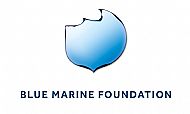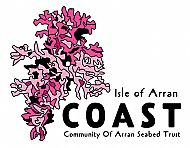Safeguarding our future
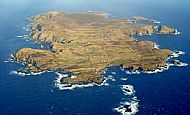
For centuries Fair Islanders have looked after their resources – not for any altruistic reason, but because they had no other option.
Greater mobility and changes in marine legislation in the 20th century meant that others now had access to a resource which had previously been largely for local use. The new user groups were free from the constraints of safeguarding stock for future use, because for them Fair Isle waters were only part of a wider resource. The islanders could no longer compete and the 20th century saw a wholesale and difficult shift from a subsistence economy with fishing at its heart, to a more mixed economy.
What has not changed, however, is that the new economy still relies strongly on our ties with the sea. From traditional Shetland yoal boat-building to the tourist trade, the key element for those earning a living on the isle remains a healthy marine environment and maintenance of the marine resource.
The Fair Isle community is very concerned that we are effectively excluded from having a say in the control and management of our marine resource – a resource which has sustained us for centuries and which remains at the heart of our economic and social life.
The Fair Isle community recognises the imperative need to safeguard our resources, terrestrial and marine, for future generations. Our concerns are social and economic as much as environmental. A healthy, pristine environment is an essential ingredient for our future well-being.
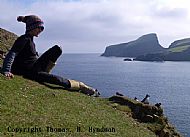
Background
It was in 1989, at a meeting of all the island families on Fair Isle, that one crofter famously first expressed concerns about the island’s marine resource -
Seabirds were dying from lack of food; piltocks, ollocks and mackerel in season were still to be had, but where, he asked, were the other fish? The trawlers were no longer finding the sandeels they had previously taken in the thousands of tons; or were sweeping through large shoals of juvenile whitefish in the hope of catching some of commercial size.
Should we not be worried about all this, he asked? And he was right.
His words were the stimulus for a community effort which has lasted to this day and which has provided the inspiration for other communities to follow the islanders’ example and take action to protect their marine environment.
Initially, the islanders’ concerns were raised in letters and reports to the National Trust for Scotland, owners of Fair Isle since 1954, and to other interested organisations. But in 1996 the islanders' efforts were formalised through the formation of the Fair Isle Marine Environment and Tourism Initiative (FIMETI).
It was much needed. Until the 20th century Fair Isle’s economy was based on fishing. But with larger boats targeting its waters and islanders working in vain to protect their essential economic resource, it began to suffer.
By 1950 things had reached crisis point, and four years later the Trust stepped in. The move from subsistence fishing to a diversified economy on Fair Isle was slow and painful, with the Trust working closely with the community to renew infrastructure and diversify income-earning opportunities.
Since then the population has grown and, with it, the range of activities, many of which still reflect the marine culture. At the same time Fair Isle Bird Observatory, established by the last laird, George Waterston, continues to monitor the seabirds and the food they bring to their chicks.
Visitors are now more numerous than ever before, with many people appreciating Fair Isle for its environmental qualities. The variety of the wildlife is a fundamental factor.
Fair Isle’s seabird populations are so large that several species are designated as internationally important and others as nationally important.

Two species of seal, dolphins and whales use Fair Isle waters, including the stunning orca, or killer whale.
There are several, rare species of seaweed, and the isle lies in an important transition zone between northern and more southern marine fauna expanding northwards with climate change.
Thus, as well as being a major reason for people to visit, the marine environment remains an essential resource for the isle and its inhabitants.
In recognition of all this, the community as represented by FIMETI has done everything it can since its inception in 1995 to seek sensible management of Fair Isle’s waters, engaging in dialogue with local and regional planning organisations and making proposals for a pilot study in sustainable management.
FIMETI Reports and Publications
With the financial help of Scottish Office Rural Challenge and RSPB funding, FIMETI produced two policy reports: Managing the Sea For Birds (1997) and Safeguarding Our Heritage - the Fair Isle marine resource, a community proposal for its sustainable management" (1998).
Following this, FIMETI took the lead in a sustainable resource management project with communities in north Norway and Swedish Lapland as part of the EU/Norwegian Government Northern Periphery Programme.
A number of booklets relating to various aspects of the natural and cultural values of the Fair Isle marine resource were also prepared and published in 2003-04.
Despite little practical progress towards its primary aim so far, FIMETI still strives to bring sustainable resource management measures to Fair Isle waters. From 2009, the isle has worked with the North Atlantic Fisheries College in the preparation of a local Marine Spatial Plan as part of the Scottish government's Scottish Sustainable Marine Environment Initiative (SSMEI); and produced its own Fair Isle Marine Action Plan which encompasses the community's environmental, social and economic aspirations for the marine resource.
This led to the 'Proposal for a Marine Protected Area for the Waters around Fair Isle (MPA)' which was presented by the community to the Scottish Government in December 2011.
The final document, Fair Isle (proposed) Demonstration & Research MPA was presented to the Scottish Government during 2015 and this was open to public consultation until 24th May 2016.
On 26th October, 2016 Scotland's Environment Secretary Rosannah Cunningham announced the designation of the new Fair Isle Marine Protected Area (MPA). More details....
FIMETI has now finally achieved its aim.
********
FIMETI Newsletters
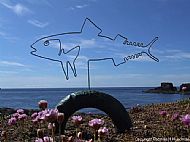
Further information about Fair Isle community's continuing 25 years' endeavour to achieve marine protected status for the waters around Fair Isle can be found in FIMETI's annual newsletters 'Making Waves'.
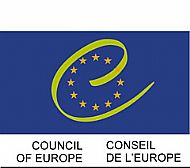
COUNCIL OF EUROPE SUPPORT FOR FAIR ISLE MPA
Fair Isle has held the prestigious Council of Europe Diploma since 1985, which recognises communities living in harmony with their environment.
It is significant that when it was recently renewed in 2010, the Council of Europe Committee of Ministers attached six recommendations, four of which related to the marine area. They include a call for a Marine Protected Area within the European Union Birds Directive and Habitats Directive in waters adjacent to Fair Isle to be created in consultation with Fair Isle’s community representatives, and for the traditions and culture of the island population to be taken into consideration when issuing regulations.
The Fair Isle's community's Proposal for a Marine Protected Area for the Waters Around Fair Isle is supported by the most recent Council of Europe Diploma renewal (2010) through the following condition:
"In recognition of the internationally important seabird colonies and associated marine environment currently experiencing severe pressure, the United Kingdom and Scottish Governments should use the powers invested in them through the Marine and Coastal Access Act 2009 and the Marine (Scotland) Act 2010 to establish the protected marine area which has been called for in successive diploma renewals. A new protected marine area should be in conformity with the Fair Isle Marine Action Plan."
Failure to achieve this requirement would see Fair Isle lose its diploma at the next renewal (2015).
In 2012, the Fair Isle community presented a petition to the Scottish Parliament Petitions Committee asking for the above Council of Europe Diploma condition to be honoured and implemented by the Scottish Government.
On 26th October, 2016 Scotland's Environment Secretary Rosannah Cunningham announced the designation of the new Fair Isle Marine Protected Area (MPA). More details....
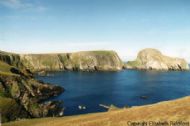
OTHER COMMUNITY-LED MARINE INITIATIVES AND SUPPORT FOR A FAIR ISLE MPA -
Initially, the Fair Isle Marine and Environment and Tourism Initiative (FIMETI) was the only community-led initiative in the UK pressing in this way to protect its marine resource. However, other groups have now emerged, including the Community of Arran Trust (COAST) project and the Lyme Bay Fisheries and Conservation Reserve.
We are very grateful for the mutual support and encouragement that we are now receiving from these and other community-led marine intitiatives and MPA supporters such as the Blue Marine Foundation and The Clipperton Project.
********
Fair Isle Marine Environment & Tourism Initiative.
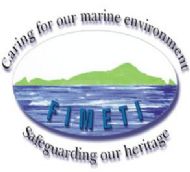
Text and photographs Copyright Fair Isle Marine Environment and Tourism Initiative. All rights reserved.


